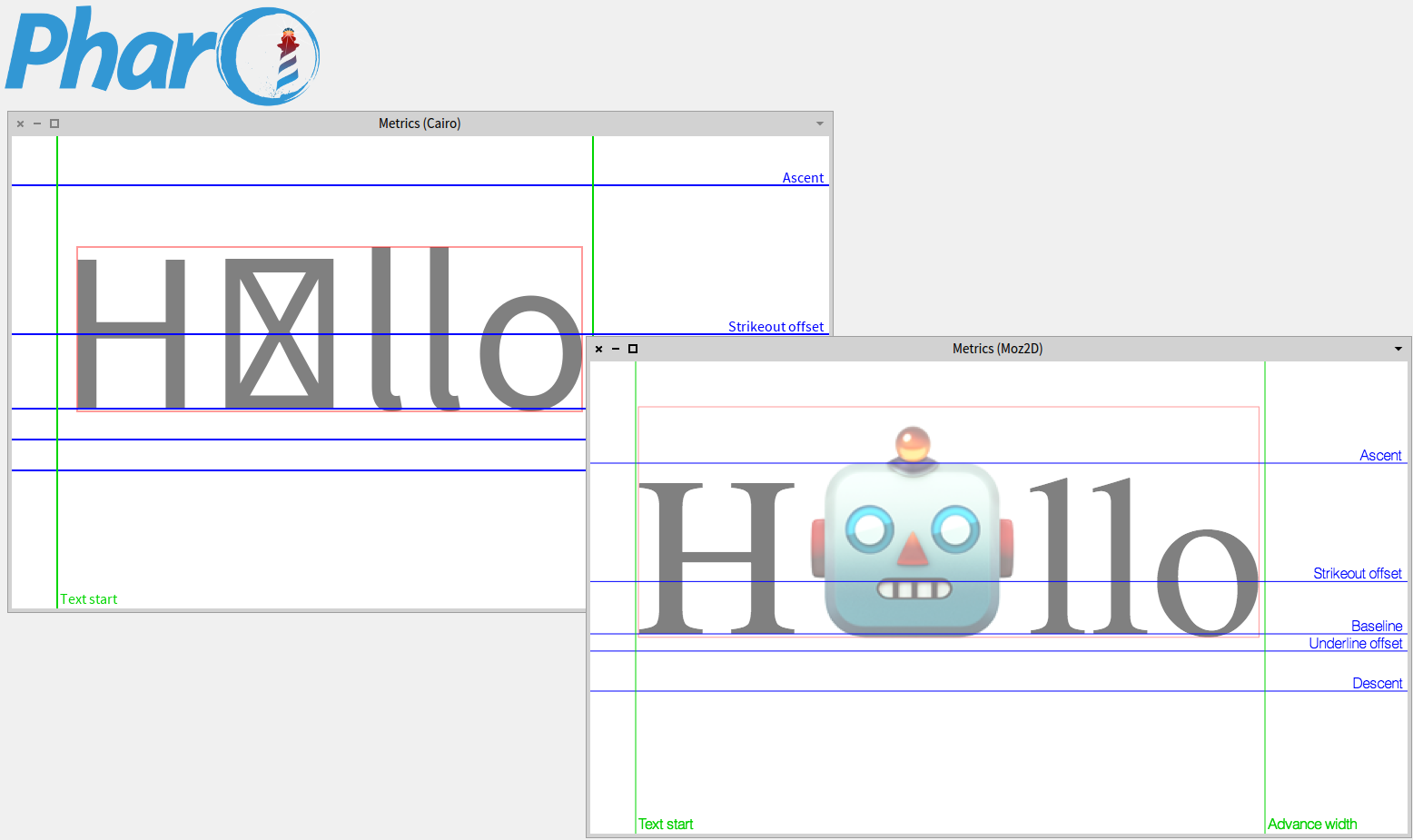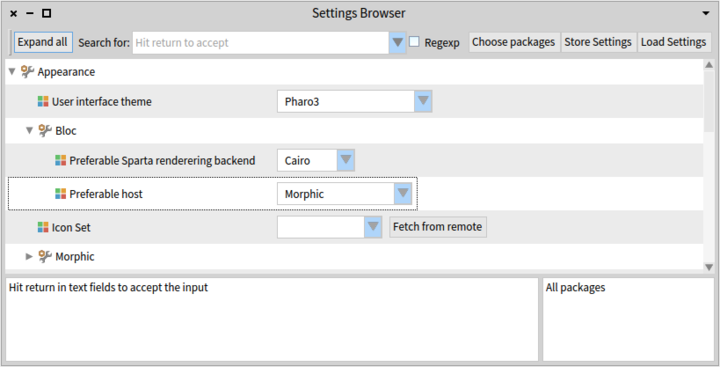Extending Bloc to handle new backends and hosts
Bloc is the new graphical engine for Pharo initiated several years ago by Alain Plantec. It is an ambitious project that has as goal the complete overhaul of the rendering in Pharo starting all the way from the basics of drawing. The project underwent at least 4 distinct redesigns and you can read some of its history on the GitHub page.
This post is about a new milestone that was reached recently.
At the very basis of Bloc, there exist a canvas called Sparta. Sparta was released last year and was developed by Aliaksei (Alex) Syrel. At the time, Sparta offered highly performant rendering by relying on a stripped version of Moz2D and an SDL window. While the rendering is remarkable in terms both of speed and of beauty and flexibility, the community still raised the issue of having to depend on yet another external library (Moz2D) that had to be stripped down.
Indeed, this can pose a risk in the long term. It would have been much better to be able to provide some way of rendering Sparta on top of the current solution provided by Morphic and Cairo even if the rendering would not be as pretty.
It is at this moment that the investment of having thrown away all those working versions that were not quite good enough paid off. Based on the work of Glenn Cavarle to decouple the backend and host from the main Bloc logic, Alex implemented a new solution to get Sparta to work with the Cairo backend inside Morphic as host. For example, the following screenshot shows how rendering on the two backends looks like inside a Morphic host:

As the screenshot reveals, the basic rendering is similar, while the advanced effects, such as blur, are only available in the Moz2D backend. Similarly, when displaying fonts, there might be differences due to Cairo being less adept at finding all fonts:

The choice between the different backends and hosts can be adjusted via two settings available in the Settings Browser.

To load the Bloc, you can use two scripts in Pharo 6.0.
To load a minimal Bloc relying only on Cairo and Morphic, please use:
Metacello new baseline: 'Bloc'; repository: 'github://pharo-graphics/Bloc/src'; load:#core
To load the Bloc code that also relies on SDL2 and Moz2D, including the virtual machine plugin for Moz2D:
Metacello new baseline: 'Bloc'; repository: 'github://pharo-graphics/Bloc/src'; load:#development
All in all, this now implies that the backend and host windowing system are no longer a liability, and that we can safely invest in building the future Pharo graphical user interface on top of Bloc.
